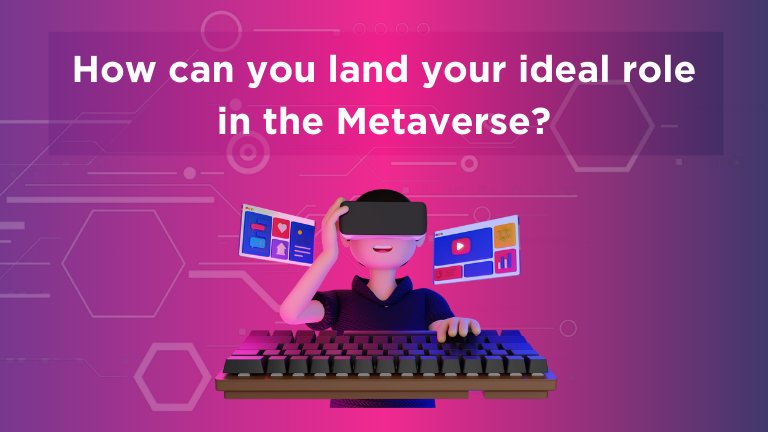The rapid advancement of AI across creative tech is creating unusual hiring patterns: the majority of companies are conducting their senior-level AI strategic hiring behind closed doors.
Companies aren’t advertising these vacancies on LinkedIn. They’re using retained confidential search. As a result, the publicly visible hiring activity doesn’t reflect what’s actually happening in AI recruitment.
Why Creative Tech Companies Hire AI Talent Secretly
Creative tech companies building AI capabilities face a delicate balance, and competitive intelligence is driving this. Every published job advertisement reveals strategic intent, such as what AI tools and methodologies you’re adopting, which capabilities you’re building, and where you’re heading. You’re not oblivious to the fact that their competitors read the same job posts you publish.
A job posting for a “Head of AI-Generated Content” signals to competitors that you’re moving into automated production. A “Director of Machine Learning for Real-Time Rendering” reveals your virtual production strategy. These vacancies function as roadmaps to your competitive advantage.
Client relationships add complexity. High-profile brands worry about their reputations, IP protection, and customer responses to AI use as the market remains divided. Some consumers embrace AI innovation. Others see it as inauthentic. Brands can’t risk their reputation on uncertain public sentiment.
When clients discover their agency is building AI capabilities, immediate concerns follow: Will this damage our brand perception? How do we protect our IP? What happens when customers find out? Companies hold these conversations during confidential briefings, not public announcements.
Press and social media create instant narratives. “Company X Hires AI Creative Director” becomes “Is AI Replacing Creatives?” within hours. The story writes itself. Accuracy remains optional. Companies building thoughtfully don’t want that noise while they’re still establishing frameworks.
How Retained Search Protects All Parties
Retained search functions differently from advertised roles. Companies pay an upfront fee for dedicated, confidential service. This creates exclusivity and commitment on both sides. The search firm approaches candidates directly through established networks. No public job posts. No company names until appropriate. No risk of current employers discovering active job searches.
For companies, this means accessing passive candidates who would never apply publicly. For professionals, it means career progression without career risk. Both parties conduct the entire conversation in confidence until they’re both ready.
How AI Professionals Navigate Confidential Job Searches
This creates an immediate challenge for creative tech AI professionals. Most mid-to-senior and specialist AI talent know their worth. So do their current employers. They receive substantial compensation packages, are firmly embedded in their companies, and understand that public job searches carry risk.
They won’t apply for online job advertisements for fear their current employer will discover it. Instead, they value confidential approaches that protect everyone involved.
Senior professionals prefer direct conversations about real opportunities over vague networking requests. They want to know immediately that the approach relates to a specific role, not generic “coffee and a chat” invitations that waste their time.
Companies and professionals connect through established networks and trusted intermediaries. Both parties understand the sensitivity and act accordingly.
Why AI Capability Building Happens Years Before Public Acceptance
Here’s what drives the confidentiality: capability needs and market readiness sit years apart.
Companies need creative tech talent with proven AI expertise extending beyond experimentation or pilot projects. They must remain competitive tomorrow. Many clients won’t accept AI-generated work until overall trust in AI increases. These gaps require companies to develop internal competency discreetly.
Companies building AI capability now position themselves for client conversations happening in 12-18 months. When clients finally ask, “Can you do this with AI?”, the prepared companies already have frameworks, case studies, and teams in place. The unprepared companies start recruiting publicly, revealing they’re playing catch-up.
How Companies Reveal AI Capabilities Strategically
Not all companies plan permanent secrecy. They follow a logical sequence:
Build internal capability discreetly. Develop frameworks and governance. Run internal pilots and test with innovation-friendly clients. Document successes. Reveal strategically when the market accepts it. We’ve seen several of our clients execute this perfectly firsthand. They emerge with proven systems and case studies, leaving everyone wondering how they did it. All while their competitors still debate whether to start AI pilots.
Companies must time their revelation carefully. Companies that announce too early face client concerns without proof points. Companies that wait too long miss a competitive advantage. The companies getting this right build for 12-18 months, then emerge with client work to show, not promises to make.
What Hidden Signals Show Companies Are Building AI Teams
These moves happen discreetly, but several trends signal that companies are building internal AI capability.
They start winning pitches and projects from much larger companies. Their production timelines are reduced without visible team growth. Their creative output significantly ramps up. They start speaking at industry conferences about AI implementation, not AI theory. These patterns indicate increased AI capability built through confidential hiring.
Watch for companies whose work quality suddenly shifts. Productions that previously took months now take weeks. Creative variations that required entire teams now happen with small groups. The companies achieving this didn’t get lucky. They hired strategically while others were still talking.
The companies that seem quiet might be moving quickest. The absence of LinkedIn posts doesn’t mean there’s been no progress. It very often means the opposite.
When Confidential AI Hiring Will Become Public
This dynamic will shift. Companies that secure talent first will demonstrate their capabilities through proven results. Client resistance will reduce as the advantages become clear. What companies hide today, they’ll present at conferences tomorrow.
The market will tip when enough high-profile brands publicly embrace AI-generated work. Once that happens, the confidential phase ends. Companies will compete publicly for AI talent because client relationships no longer require protection. However, we’re not there yet. During this transition, confidential searches acquire the best talent. It’s less about secrecy for its own sake and more about managing multiple stakeholder concerns while building competitive advantage.
Why LinkedIn Doesn’t Show Real AI Transformation Progress
If you’re assessing AI transformation pace based on what you see on LinkedIn, you’re missing where real progress happens.
In creative tech, the most important developments unfold out of plain sight. Companies aren’t waiting for permission or headlines. They’re already building it, quietly and confidently, behind the scenes.
We specialise in confidential recruitment for creative tech companies. Whether you’re building capability discreetly or exploring senior AI roles confidentially, we understand the territory.




